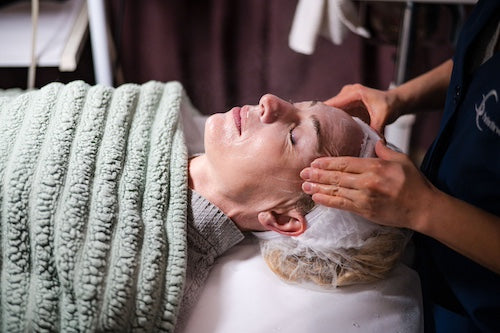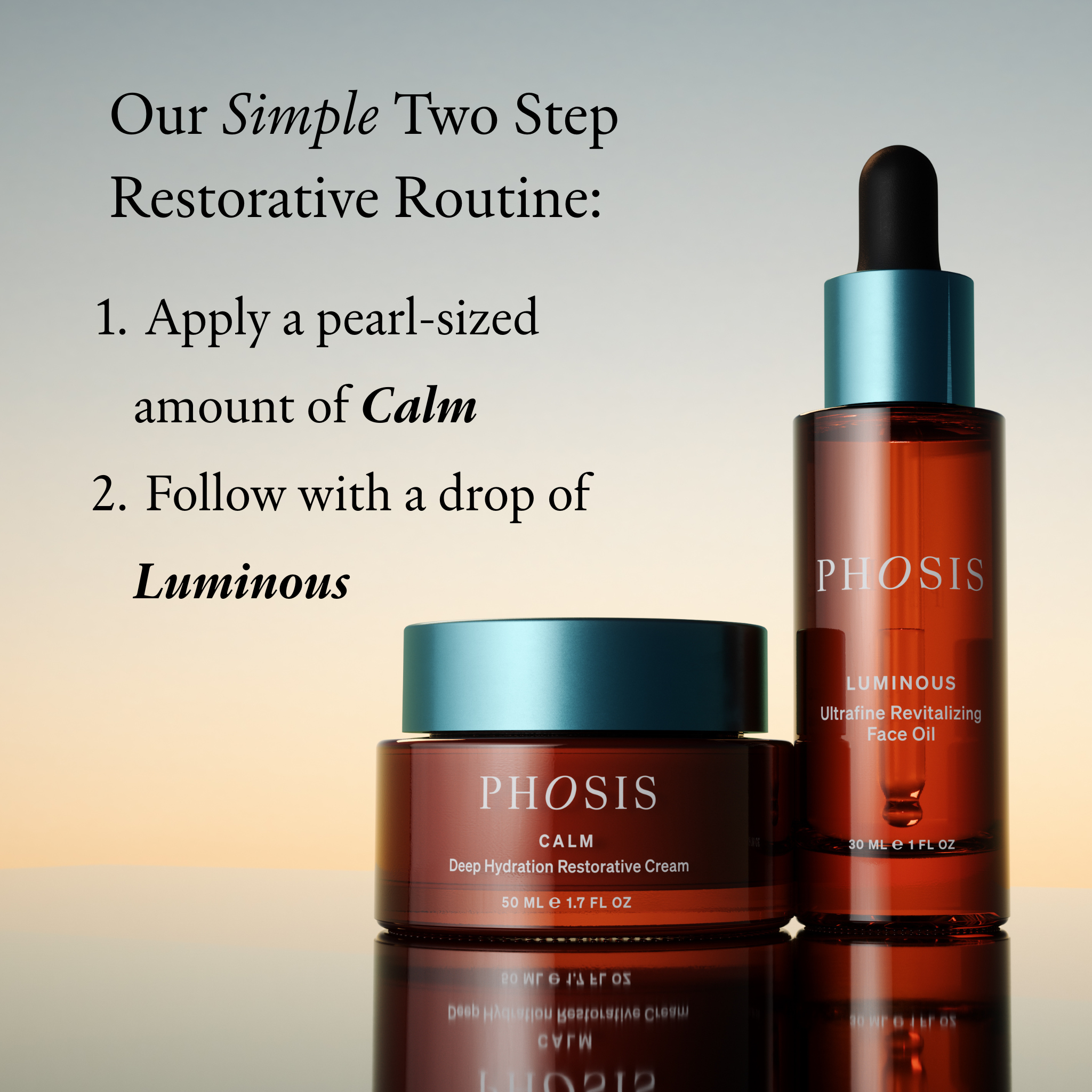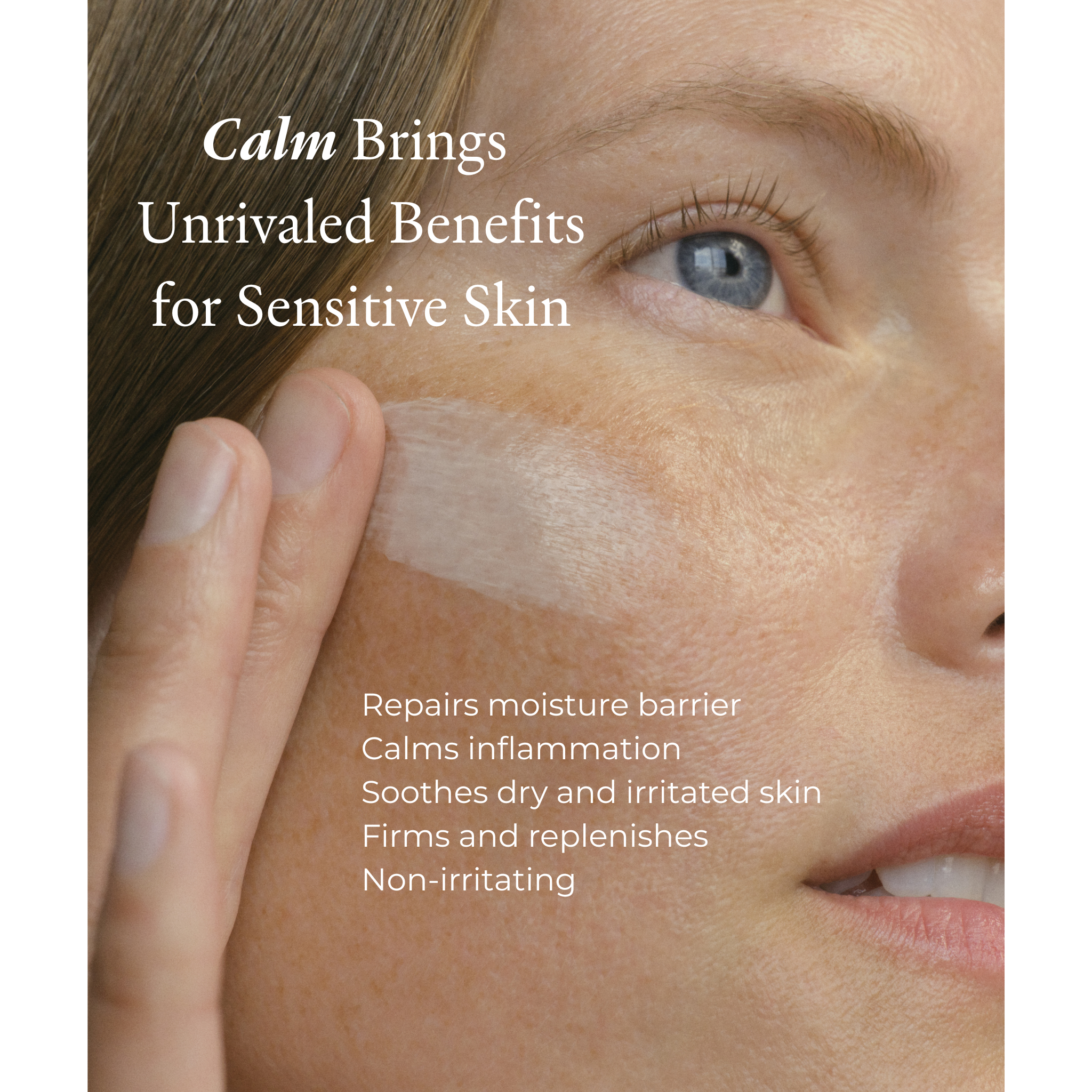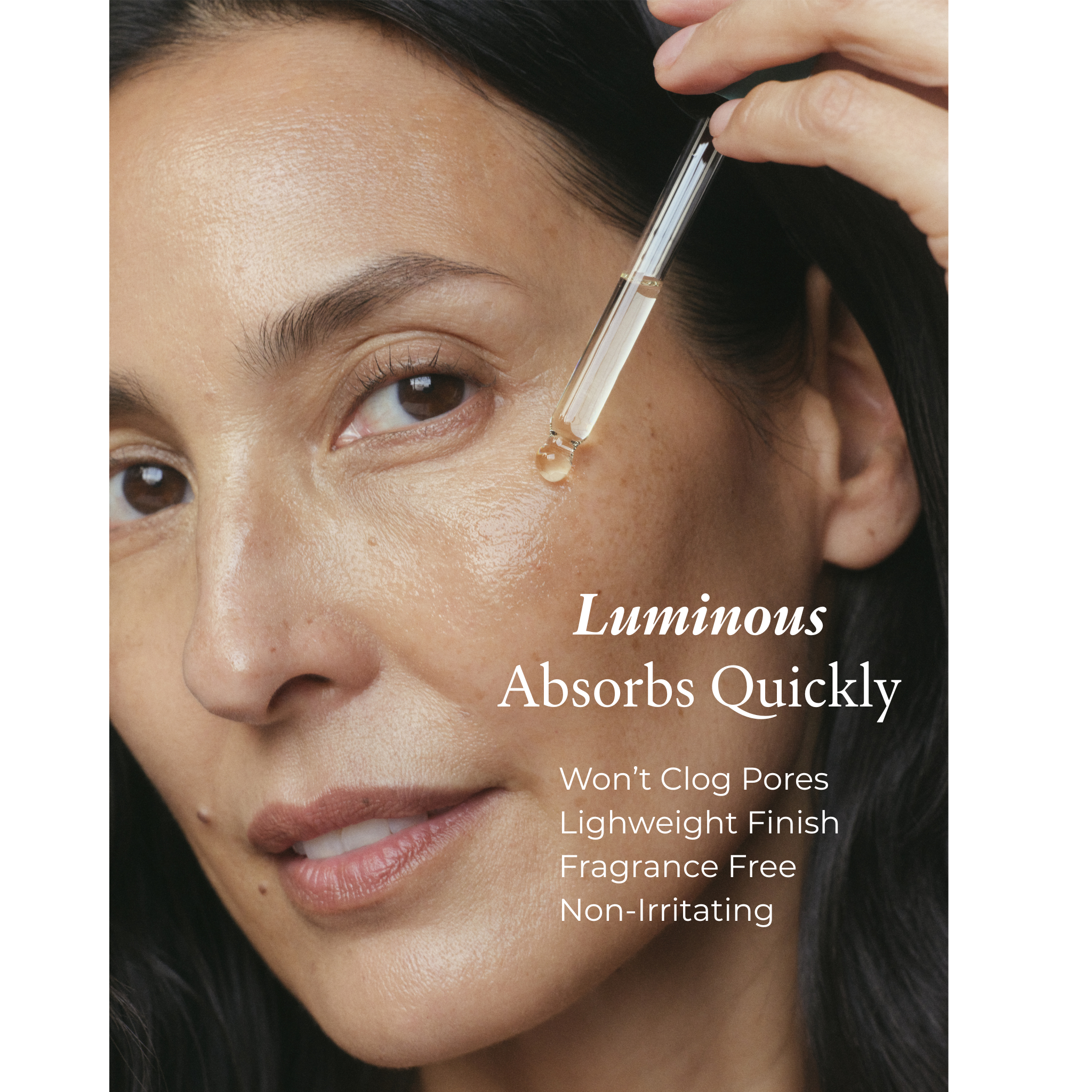Many women in their 30s and 40s may begin to notice something unexpected: their skin starts to feel unfamiliar. A sudden, rashy warmth across the cheeks, persistent dryness that no moisturizer seems to touch, and increased reactivity to products that once worked perfectly. These changes are often confusing—until they’re understood for what they are: signs of perimenopause.
Skin is one of the first places hormonal shifts show up, and during perimenopause and menopause, those shifts can be dramatic. From breakouts to itchy dryness, redness to loss of elasticity, perimenopause skin changes are common—but with the right knowledge and care, they’re also manageable.
Why Does Skin Change During Perimenopause?
Estrogen plays a key role in maintaining healthy, radiant skin. It supports hydration, strengthens the lipid barrier, encourages collagen production, and helps regulate melanin. As estrogen levels fluctuate and eventually decline during perimenopause, the skin responds—often in uncomfortable or unexpected ways.
The result? A range of perimenopause skin problems can affect both the way skin looks and feels. Dryness, sensitivity, acne, hyperpigmentation, and loss of elasticity all become more common as the skin adjusts to a new hormonal rhythm.
How to Know if Skin Problems Are Because of Perimenopause or Something Else
Perimenopause can begin for some women in their 30s, but most typically starts in women ages 40-44. If new skin issues appear alongside other common symptoms—irregular periods, disrupted sleep, mood changes, or hot flashes—they may be related to hormonal shifts.
Of course, persistent or severe symptoms should be evaluated by a healthcare provider or dermatologist. But understanding the link between hormone levels and menopause skin changes can offer clarity and open the door to more effective, compassionate skincare.
7 Skin Changes and Problems to Look Out for During Perimenopause
Acne During Perimenopause
Hormonal acne isn’t just a teenage concern. During perimenopause, falling estrogen and relatively higher testosterone can lead to breakouts—especially around the jawline and chin. These blemishes tend to be deep, cystic, and slower to heal.
Look for: gentle, non-drying products that treat acne without stripping the skin. Avoid cleansers with harsh surfactants that leave skin feeling tight or squeaky; skin still needs nourishment. If your skin doesn't clear with at-home treatments, schedule an appointment with your dermatologist, who can help you navigate prescription treatments.
Sudden Dryness or Dehydration
Many women describe a deep, persistent dryness during perimenopause. This is caused by the weakening of the lipid barrier, which normally helps the skin retain moisture. Without sufficient estrogen, skin can feel tight, dull, and perpetually thirsty.
Look for: rich moisturizers with ceramides, squalane, and fatty acids—especially creams that describe themselves as “barrier-repairing” or “deeply hydrating.” Choose textures that absorb well without sitting heavily on the skin.
We love: Calm Deep Hydration Restorative Face Cream
Calm was carefully formulated for this exact purpose. It's packed with ceramides to help restore strong barrier function. And the texture is unlike anything else; it's a thick, lush, luxurious cream without heaviness or greasiness that calms skin with a variety of botanicals that improve skin's hydration.
Increased Sensitivity
Skin may become more reactive, flushing easily or stinging in response to products that were once well-tolerated. This sensitivity stems from thinning skin and heightened inflammation—both linked to hormonal changes.
Look for: minimalist formulas with short ingredient lists and no fragrance, essential oils, or exfoliating acids. Seek out calming ingredients like red algae extract, sea buckthorn oil, and meadowfoam seed oil.
"Phosis products are 100% free of essential oils and fragrances, which have been proven to irritate skin that's increasingly sensitive in perimenopause and menopause," says menopause educator and Phosis founder Susan Campbell.
Loss of Firmness and Elasticity
Collagen levels decline gradually with age, but the drop accelerates during perimenopause. This contributes to fine lines and a loss of plumpness that can feel sudden and pronounced.
Look for: peptide-rich serums, antioxidant-infused oils or moisturizers, and gentle retinoid alternatives like bakuchiol. Products labeled “firming” or “replenishing” may offer additional support for visible firmness.
Uneven Tone and Hyperpigmentation
Hormonal fluctuations can trigger increased melanin production, leading to dark spots, blotchiness, or a dull, uneven tone. Sun exposure only amplifies this effect.
Look for: Products with vitamin C, licorice root extract, and azelaic acid to brighten and even tone. Always pair with a mineral sunscreen labeled “broad spectrum” to prevent further pigmentation.
Slower Healing and More Irritation
Minor skin injuries—scratches, bruises, blemishes, or irritations—may take longer to resolve during perimenopause and menopause. Slower cell turnover, inflammation, and reduced barrier function all contribute to a sluggish healing response.
Look for: skin-soothing balms or products marketed for “repair,” “recovery,” or “post-treatment” use tend to be best suited for this.
Changes in Skin Texture
Many women notice that their skin feels rougher, less smooth, or appears duller overall. Pores may seem larger, and the skin may lose its typical refinement. This is often due to decreased cell turnover, dryness, and cumulative hormonal impact.
Look for: products lactic acid, or gentle enzyme exfoliants, paired with a face oil packed with antioxidants. Think: glow without irritation.
We love: Luminous Ultrafine Revitalizing Face Oil
This lightweight botanical oil brings clinically tested relief for dryness and texture. It can be used alone or over your moisturizer to illuminate dull skin. Bonus: The antioxidant-rich formula boosts softness and improves radiance.
How to Deal With All of These Skin Changes
"Supporting perimenopausal skin is not about overcorrecting or doing more. It’s about tuning in, simplifying, and choosing products that meet skin where it is today, not where it was a decade ago," Campbell says.
Aggressive exfoliation, overuse of actives, or overly complicated routines often do more harm than good during this phase. What the skin truly needs is nourishment, barrier repair, and care grounded in both science and intuition.
Phosis was created with this philosophy in mind. With formulations designed to support hormonal skin, each product offers more than just results—it offers relief, ritual, and reconnection.















